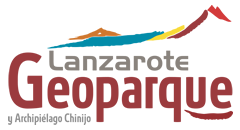Project Description
It is characterised by a cliff developed from the historical Timanfaya lava flow (18th Century) on the west coast of the island of Lanzarote. The historical lava flow reached enormous power or thickness at this point. They are olivine basaltic lavas with abundant xenoliths of dunite. On the surface, they have aa type morphology and large accretion balls can be observed both on the surface and the inside of the lava. On the cliff you can see the prisms of columnar disjunction formed during the lava cooling. Coastal erosion processes take advantage of these joints and the columnar structure of the lava flow to form corridors of water penetration, zenithal windows, arches, bowling beaches at the foot of the small caves in the wave breaking zone, etc. On days when there are strong waves, the strong compression of the waves within the halls of the lava generate the formation of jets of spray foam seawater (locally called bufaderos) reaching several meters in height on the outer surface of the lava.
This geosite is of major volcanological interest and also secondary geomorphological and petrological type interest. It is conditioned for tourist visits, it has signage, private parking and uses natural balconies between the bufaderos (blowholes) connected through a network of almost invisible paths. Very spectacular when the sea is not calm.

